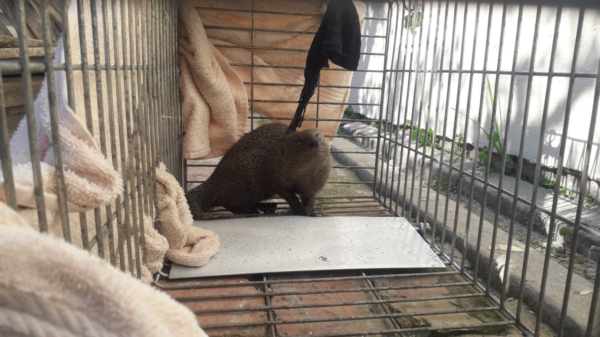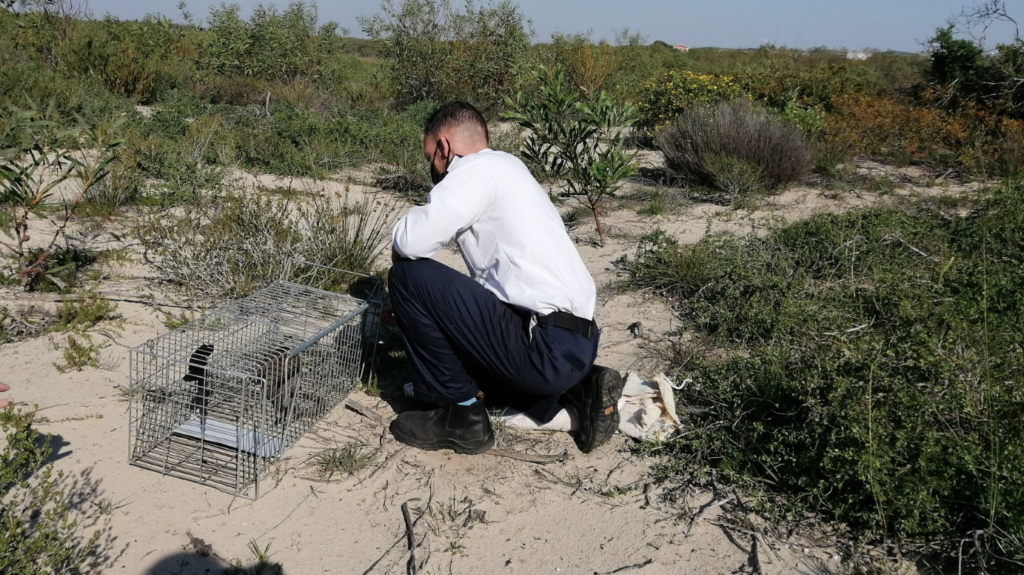“This little guy was clearly not in a natural or safe habitat but he proved a little to quick for us to catch. The property owner agreed to closely monitor a humane trap that we set up in his yard and the very next day we received a call to say that the Mongoose had taken the bait and was safely inside the trap,” the SPCA said.
“Trainee Field Officer Aldine Soutter responded immediately and left to collect our feisty friend and release him back into his natural environment where he belongs.”

The Cape (Small) grey mongoose is a solitary animal and one of the more regularly seen mongooses on roadsides and in urban areas, as they have adapted well to urbanisation. They can sometimes be confused with the large grey mongoose, which is larger in size with a longer coat and is most frequently found in wetland areas.
It is a small species that can grow 55–75 cm long and weigh from 0.5 kg to 1.2 kg. Their long, slender body is speckled dark grey with a long bushy tail of up to 20 – 34 cm long, that is always held close to the ground. Their short legs are darker than the rest of the body, and they also have pointed muzzles and round ears. Species found in the northwest are darker, and have been described as being “almost brown-black”. The males are larger than females.
The Cape grey mongoose is sometimes included in the genus Galerella.
There are three subspecies:
– Herpestes pulverulentus pulverulentus, which occurs throughout the distribution range;
– Herpestes pulverulentus basuticus, which is found in the higher altitudes of Lesotho and western KwaZulu-Natal;
– and Herpestes pulverulentus ruddi, which is only found in the extreme northwestern parts of the distribution range.
“The Cape grey mongoose is essentially terrestrial, but can climb shrubs or trees to catch prey or rest during the day. They are active during the day, in summer from about 6am to 8.45pm, but they are less active in winter. In summer they are not active during the hottest time of the day, but resume activities in the afternoon. The stand on their hind legs to scan for danger or prey,” said the South African National Biodiversity Institute (SANBI).
Picture: Supplied






